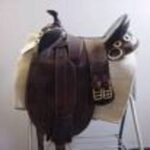Published by Pearson Education, Inc., a division of Prentice Hall of Upper Saddle River, New Jersey, Golosa combines the best of traditional and modern methodology for learning a foreign language. The first, second and third editions were printed in 1994, 1999 and 2003, respectively. The essential texts consist of a 398-page hardcover textbook and a 220-page workbook. The title “Golosa” means “voices” in Russian; the singular is “golos.”
People with linguistic propensities will eagerly embrace the study of a foreign language, while those not similarly inclined might be especially intimidated by Russian. The six cases – nominative, genitive, dative, accusative, instrumental and prepositional- combined with the 33-character Cyrillic alphabet, might rile the most enthusiastic students. But Golosa breaks up the lessons into simple, manageable concepts, providing examples to which native speakers of English can easily relate.
Some criticism has been leveled at conventional reading and writing instruction for stressing rote memorization of the alphabet and basic sounds of letters, the argument being that children can learn to read largely via osmosis. This is an error that Golosa does not make in teaching English speakers Russian, but at the same time acknowledges that there are exceptions to pronunciation rules. The introduction gives the Russian alphabet, along with basic vocabulary and many Russian-English cognates- words that are basically the same in both tongues.
Golosa gives the upper and lowercase for the Russian alphabet, in print as well as cursive. Somewhat discouraging, however, is the emphasis on the latter, which is considerably more difficult to write than the printed characters. Thus, the prospective student of Russian may spend much time and effort learning to print Russian, only to be informed several pages later that since Russians always write in cursive, he will have to learn that alphabet as well.
To hear the proper pronunciation, students log onto the web site www.prenhall.com/golosa, where they can download sound files of native speakers, male and female, speaking the actual Russian words. This web site features audio and video for Books I and II of the third and fourth editions of Golosa. The audio portion can also be purchased on CD-ROM for those who don’t want to spend a lot of time downloading MP3 files.
Every chapter in the textbook has interims at which the student is instructed to complete matching exercises in the workbook. This is good in that it reinforces what the student has just learned, but somewhat detrimental in that it breaks the momentum. Although important for learning and memorization, repetition is used a bit too heavily in this course, running the risk that students will grow bored. Many of the exercises are designed for use with one or more partners, somewhat limiting the independent student.
Golosa emphasizes important cultural aspects of Russian, integrating them skillfully into linguistic instruction. Grammar and syntax merge seamlessly with habitude and history. In addition to learning conjugations and spelling rules, students learn which phrases are appropriate for which situations, Russian customs, and some major differences between Russian and American society.
The new vocabulary is summarized at the end of every chapter, and conveniently grouped into nouns, adjectives, question words, verbs, adverbs, phrases and other words, and passive vocabulary. The gender -masculine, feminine or neuter- of nouns in also supplied.
But throughout the preceding chapters the new words are used so well in context that most students will already understand them by the time they reach the vocabulary lists. The Golosa textbook contains ten chapters, dealing with a number of different subjects and situations. Also included is a 28-page Russian-English dictionary.
Golosa provides a very effective explanation of declensions, the six above-mentioned cases of nouns, pronouns and adjective. Many English speakers, especially those who have never studied Latin in school, are unfamiliar with this. An understanding of this difficult concept is crucial to Russian, as the cases of certain words determine the meaning of the sentence, not necessarily word order (p. 30 of textbook).
Golosa, Book I, Third Edition, is very expensive if purchased new, and even used editions tend to be rather pricey, but it is one of the best foreign language learning programs available. For an interactive, updated linguistic experience, Golosa is hard to beat.






